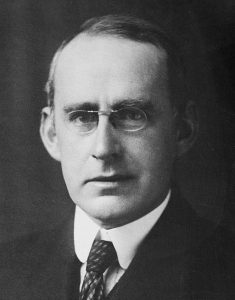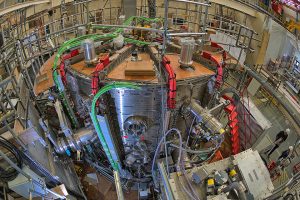UK Fusion Pioneers
 The United Kingdom has a long history of research into nuclear fusion. In fact, the idea of harnessing the power released by fusing together isotopes of hydrogen, the process that powers our Sun, was first proposed by the British Astrophysicist Arthur Eddington in a paper called “The Internal Constitution of the Stars” published in 1920. The paper is a fantastic read and is almost prophetic in nature:
The United Kingdom has a long history of research into nuclear fusion. In fact, the idea of harnessing the power released by fusing together isotopes of hydrogen, the process that powers our Sun, was first proposed by the British Astrophysicist Arthur Eddington in a paper called “The Internal Constitution of the Stars” published in 1920. The paper is a fantastic read and is almost prophetic in nature:
Arthur Eddington:
“If, indeed, the sub-atomic energy in the stars is being freely used to maintain their great furnaces, it seems to bring a little nearer to fulfilment our dream of controlling this latent power for the well-being of the human race – or its suicide.”
This was followed, shortly after in 1934, by Ernest Rutherford and his team at Cambridge creating the first manmade fusion reactions; fusing together heavy hydrogen ions, known as deuterium, together to form helium.
Early Beginnings

The UK Atomic Energy Authority (UKAEA) was established on the 19th July 1954 with a mission to “to produce, use and dispose of atomic energy and carry out research into any matters therewith”, including fusion. In the 1960s, UKAEA built the ZETA (Zero Energy Thermonuclear Assembly) reactor, the world's first toroidal (donut shaped) fusion device. Although ZETA was ultimately unsuccessful in achieving fusion, it led directly to the development of the tokamak, perhaps the most successful type of fusion reactor to date, in the USSR.
As fusion reactor development continued apace in the 1970s, the UK joined the European Fusion Programme, which was established to coordinate research efforts across Europe. In 1977 UKAEA’s Culham site (now Culham Centre for Fusion Energy) in Oxfordshire was selected to host the Joint European Torus (JET) reactor. Since beginning operation in 1983 the JET reactor has been one of the most successful fusion experiments to date, and has produced important breakthroughs in fusion research, including being the first tokamak to use tritium in 1991. Later in 1997, JET set a record value for the ratio of energy released (16 MW) relative to the energy used to heat the plasma (24 MW), resulting in a Q value of 0.666. More recently, JET produced a record 59 megajoules of energy while sustaining a fusion plasma for five seconds, a time limit imposed by heating of the machine’s magnets. The results obtained from JET have made a significant contribution to the development of the ITER reactor in the South of France. This massive project is a global collaboration with countries representing over half of the human population being engaged in the project.
Leading the World in Compact Fusion

In parallel with its work on JET, UKAEA has lead development in advanced tokamak geometries through the Small Tight Aspect Ratio Tokamak (START) and the Mega Amp Spherical Tokamak (MAST) reactors. This spherical geometry, which looks like a cored apple, is the foundation for the UK Government’s Spherical Tokamak for Energy Production (STEP) project, which aims to build a compact, demonstration fusion power station. HM Government has committed £220 million for the design of the reactor which it hopes to achieve commercial fusion power by the late 2040s. In 2022, the West Burton site, in North Nottinghamshire was selected to host the STEP reactor.
Perhaps one of the most interesting developments in fusion over the past decade has been the emergence of the private sector. Private finance has allowed the establishment of fusion SMEs that promise to be able to deliver fusion energy quicker and cheaper than the Government programmes. The UK plays host to a number of these companies, such as Tokamak Energy (founded 2009) and First Light Fusion (founded 2011) with international companies, such as Kyoto Fusioneering also setting up UK operations. Interaction between the these private companies and UKAEA has improved significantly in recent years and several companies are planning to build their next devices on UKAEA’s Culham site, including Tokamak Energy and their superconducting ST-F1 tokamak, First Light Fusion’s Machine 4 energy gain demonstrator and the Canadian company General Fusion will also build its Fusion Demonstration Plant (FDP) on the site.
These plans will make the UK a global leader in fusion technology. However, the construction, operation and commercialisation of these technologies will require a robust supply chain that harnesses the full potential of the UK’s technological and engineering prowess. Given the rapid transformation from a small scale science project to an industrial sector there is an urgent need to establish this new supply chain and to develop the necessary skills base to maintain the UK’s position as a global leader in fusion.
